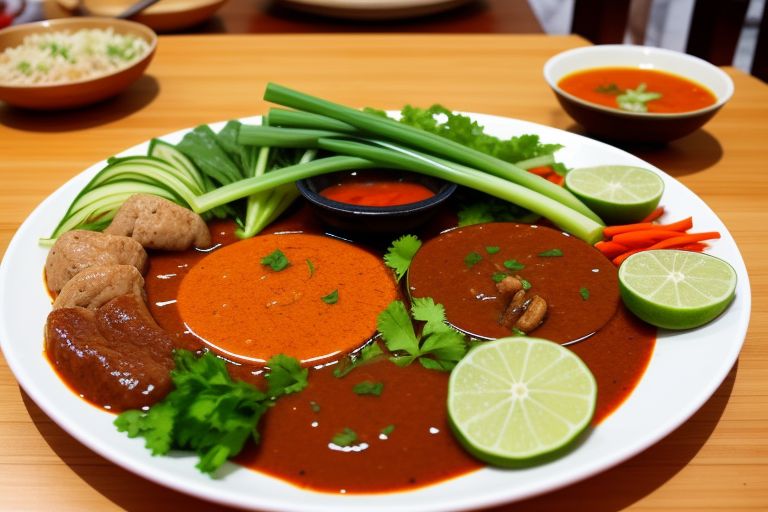Cambodia, known for its rich culture and ancient temples, is also home to a culinary tradition that is both deeply rooted and vibrantly evolving. One of the most essential components of Cambodian cuisine is its diverse range of sauces and gravies, which serve as the flavour foundation for countless dishes. From spicy and tangy sauces to rich, slow-cooked gravies, these elements are what truly bring Cambodian meals to life.
The Backbone of Cambodian Cooking
In Cambodian kitchens, sauces and gravies are not afterthoughts — they are the soul of many dishes. Whether served as a dip, marinade, or cooking base, these mixtures enhance the overall complexity of each recipe. Ingredients such as fermented fish paste (prahok), coconut milk, palm sugar, lime juice, galangal, lemongrass, and fresh herbs create unique flavour profiles that are unmistakably Khmer.
Unlike other Southeast Asian cuisines, Cambodian sauces tend to be more balanced in flavour, offering a medley of sweet, sour, salty, and umami in a single bite.
Staple Sauces in Cambodian Cuisine
1. Tuk Trey (Fish Sauce Dip)
This classic dipping sauce is ubiquitous in Cambodian meals. It’s made from fish sauce, lime juice or vinegar, minced garlic, sugar, and fresh chilli. Tuk trey is often served with grilled meats, spring rolls, and vegetable dishes. Its bold, tangy flavour brings out the best in otherwise simple foods.
2. Kroeung-based Marinades
Kroeung is a fragrant spice and herb paste that forms the base for many Cambodian dishes. When mixed with coconut milk, fish sauce, and sugar, it creates deeply aromatic sauces and marinades used in curries, stir-fries, and grilled proteins.
3. Prahok Sauce
Prahok is a fermented fish paste with a strong aroma and savoury punch. While its smell can be polarising, it is beloved in Cambodia for its depth of flavour. Prahok sauce is often cooked with minced pork, eggplant, or coconut milk and served as a dip or a gravy alongside rice and vegetables.
Rich and Hearty Cambodian Gravies
While sauces are often used fresh, Cambodian gravies are slow-cooked to develop deep flavours. These gravies are typically used in meat and vegetable stews, where the spices are allowed to infuse the dish over time.
1. Samlor Korko
One of Cambodia’s most traditional stews, samlor korko, uses a thick, savoury gravy made from a kroeung base, prahok, and seasonal vegetables. The gravy binds the ingredients together, creating a warm, comforting bowl of complex flavour.
2. Cambodian Curry (Amok and Khmer Red Curry)
These curries are known for their creamy gravies made from coconut milk, kroeung, and spices. Amok, often made with fish and served in banana leaves, has a custard-like consistency, while Khmer red curry includes beef or chicken, eggplant, and potatoes in a rich, spiced coconut gravy.
Modern Influences and Global Appeal
As Cambodian cuisine gains international attention, chefs are creating modern interpretations of traditional sauces and gravies. Vegan fish sauce, low-sodium prahok alternatives, and fusion-style marinades are now part of the culinary scene in Cambodia’s urban centres. These modern twists maintain the integrity of Khmer flavours while appealing to a global audience.
Bringing Cambodian Flavours Home
Thanks to the availability of Southeast Asian ingredients in global markets, it’s now easier than ever to recreate authentic Cambodian sauces and gravies at home. With key components like fish sauce, lemongrass, and palm sugar, you can craft vibrant Khmer-style dips and curry bases in your own kitchen.
However, nothing compares to enjoying these flavours in their homeland, prepared by skilled hands using traditional methods passed down through generations.
Your Culinary Adventure Awaits
If you’re from Bulgaria or Burkina Faso and interested in tasting authentic Cambodian cuisine straight from its source, now is the perfect time to plan your trip. From bustling street markets in Phnom Penh to tranquil riverside eateries in Battambang, the country offers a culinary journey like no other.
Begin by securing your CAMBODIAN VISA FOR BULGARIAN CITIZENS or CAMBODIAN VISA FOR BURKINABE CITIZENS, and prepare to explore a world of flavours that await in every spoonful of sauce and ladle of gravy in Cambodia.

